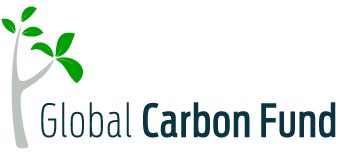Lithium Supply Outpaces Demand—for Now: What’s Ahead?
Last month, the U.S. shocked global trade with a 10% tariff on all imports. China was hit harder—34% overall, and up to 145% on battery products. However, it was later reduced to 30%. So far, key battery minerals like lithium, nickel, cobalt, graphite, and copper are exempt. This is because the U.S. still depends on imports to meet clean energy targets.
In April 2025, President Donald J. Trump signed an Executive Order to investigate how relying on imported processed critical minerals could harm U.S. national security. Nonetheless, lithium is safe for now, but uncertainty is growing.
IEA has recently analyzed that new tariffs could raise EV costs, delay battery projects, and shake supply chains. If lithium is targeted, prices may spike, and the race for U.S. refining will speed up. Let’s study the case of lithium more deeply.
Lithium Prices Stabilize as Supply Overtakes Demand
After years of volatility, lithium prices have stabilized. As per the IEA’s Global Critical Minerals Outlook 2025, last year global lithium demand rose 30% year-over-year. It reached more than 200,000 tonnes of lithium, or around 1.1 million tonnes of lithium carbonate equivalent (LCE). This was roughly equal to all lithium demand in 2018.

This growth was largely driven by the electric vehicle (EV) sector, while energy storage systems (ESS)—now accounting for 9% of lithium use are contributing significantly.
However, supply grew even faster, jumping by over 35%. This oversupply pushed lithium prices down to around USD 12,000 per tonne of LCE, a sharp decline from the record highs of 2022.
Economic uncertainty and weaker consumer confidence in the U.S. could also reduce EV purchases, hitting lithium, cobalt, graphite, and copper demand. Large-scale supply projects, particularly for capital-heavy minerals like copper, may stall or face delays, impacting future availability.
China Remains the Demand Giant
According to the EU’s Raw Materials Information System (RMIS), China consumed over 75% of global lithium in 2024 due to its stronghold in battery manufacturing. South Korea and Japan followed, owing to their significant battery cathode production capacity.
The rise of LFP (lithium iron phosphate) batteries in EVs channeled most demand toward lithium carbonate, while lithium hydroxide, used in nickel-rich batteries, experienced slower growth.
However, RMIS has a different prediction. It reveals that demand for most battery materials will likely exceed supply after 2029–2030, except for graphite, because of China’s rapid growth in synthetic graphite production.
Lithium demand is rising fast. However, without major new investments, shortages could hit lithium markets between 2030 and 2040.
Forecast of global Supply-Demand Balance for Lithium

Cost Relief for Battery Makers
The dip in prices brought welcome savings. IEA highlighted that in 2022, the lithium cost in a typical 57 kWh EV battery was USD 67. By 2024, that figure dropped to just USD 15, easing the pressure on EV manufacturers.
Industry Shakeups: Mergers, Closures, and New Players
IEA also analyzed how the low-price environment triggered a major industry consolidation. For instance, Rio Tinto acquired Arcadium Lithium, a company formed from the merger of Livent and Allkem.
At the same time, mine closures and project cancellations occurred. Several Australian operations shut down, and projects in the U.S., like Rhyolite Ridge, were scrapped due to poor economics.
Yet, new production hubs emerged:
-
Africa saw a fivefold jump in lithium supply, contributing 30% of new output, especially from Zimbabwe and Namibia, up from just 6% in 2023.
-
Latin America recorded a 65% increase, led by Argentina and Brazil. One highlight was Eramet’s Centenario project in Argentina, which began small-scale production using direct lithium extraction (DLE)—a promising new method for tapping brine resources.
Lithium Prices in 2025: Volatility Ahead
Analysts at Shanghai Metals Market (SMM) expect lithium prices to remain volatile throughout 2025. Projections for battery-grade lithium carbonate range between USD 9,000 and USD 12,000 per tonne, depending on how supply keeps pace with growing EV and ESS demand.
Here’s the latest lithium price trend prevailing between April and May.

Lithium hydroxide is also expected to rise in price, driven by the shift toward high-performance battery chemistries.
The post Lithium Supply Outpaces Demand—for Now: What’s Ahead? appeared first on Carbon Credits.



